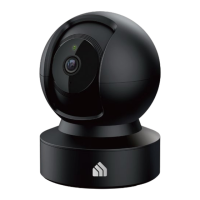
Do you have a question about the TP-Link Kasa Spot Pan Tilt and is the answer not in the manual?
| Brand | TP-Link |
|---|---|
| Model | Kasa Spot Pan Tilt |
| Category | Security Camera |
| Language | English |
Explains formatting conventions like teal text and underlines.
Provides links to website, support, community, and FAQs.
Covers 1080p HD video, Pan/Tilt, and Night Vision capabilities.
Details Motion Tracking and Instant Activity Alerts.
Explains Secure Local Storage, Two-Way Audio, and Activity Zones.
Describes Patrol Mode settings and 24/7 Recording feature.
Explains the status indicated by the System LED colors and patterns.
Identifies the camera's lens, ports, microphone, speaker, and buttons.
Instructions for resetting to SoftAP or Factory mode using the reset button.
Guide to download the Kasa app and log in or create an account.
Steps to start the camera setup process within the Kasa app.
Instructions for connecting to the network and positioning the camera.
Overview of the Home Page and Camera Page in the Kasa app.
How to view live video and remotely control camera direction.
Adjusting name, notifications, motion tracking, and Patrol Mode.
Creating schedules for alerts, privacy, and Patrol Mode.
Saving and reviewing recorded footage from a microSD card.
Instructions on adding other TP-Link or compatible smart home devices.
FCC compliance for the AC Adapter, including component and responsible party info.
Explains compliance with FCC Part 15 and operational conditions.
Details RF exposure limits and application to mobile configurations.
Notes Class B product, operating frequency, and EU declaration of conformity.
EU RF exposure limits and restriction to indoor use.
Statement regarding Canadian license-exempt transmitters/receivers.
IC radiation exposure limits and Industry Canada compliance.
Korean warning and Taiwan NCC/BSMI notices.
Safety advice in Chinese regarding moisture, cleaning, and heat.
Table indicating the presence of restricted substances in product components.
Essential safety precautions for operating the device.
Explanation of symbols like DC voltage, indoor use, AC current, Class II.
Explains energy efficiency, polarity, caution, and operator's manual symbols.
Details about product sorting and recycling according to WEEE directive.